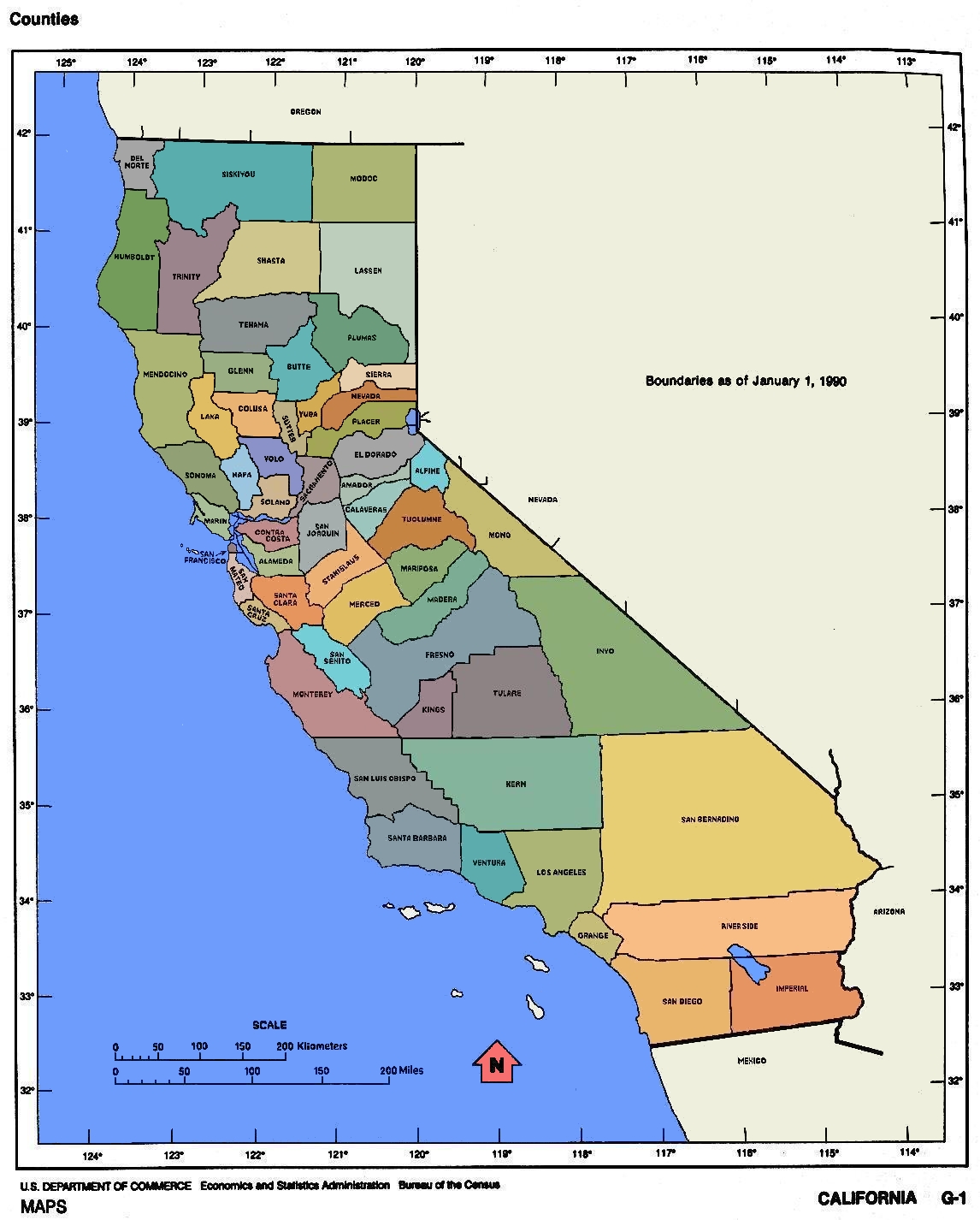Exploring California Borders: A Comprehensive Guide
California borders are not just lines on a map; they represent a rich tapestry of culture, history, and geography. The state of California, known for its diverse landscapes and vibrant cities, shares its borders with Oregon to the north, Nevada to the east, and Arizona to the southeast. Additionally, the Pacific Ocean forms its western boundary, providing a stunning coastline that attracts millions of visitors each year. Understanding the significance of these borders is essential for anyone interested in the Golden State's identity and its role in the broader context of the United States.
In this article, we will delve into various aspects of California's borders, including their historical significance, geographical features, and the impact on trade and travel. By examining these factors, we aim to provide a well-rounded view of how California's borders shape its economy, culture, and interactions with neighboring states and countries. Whether you are a resident, a visitor, or simply an enthusiast of geography, this guide will offer valuable insights into one of America's most iconic states.
Join us as we explore the borders of California, uncovering the stories behind them and what they mean for the people who live there. From the majestic Sierra Nevada mountains to the bustling cities along the coast, California's borders are more than just boundaries; they are gateways to adventure and opportunity.
Table of Contents
- History of California Borders
- Geographical Features
- Trade and Economic Impact
- Traveling Across Borders
- Cultural Influences
- Environmental Considerations
- Border Security and Management
- Future of California Borders
History of California Borders
The history of California's borders is deeply intertwined with the story of the state itself. Originally inhabited by various Native American tribes, the area saw significant changes with the arrival of European explorers and settlers.
Key Historical Events
- Spanish Colonization: The establishment of missions and settlements in the late 18th century laid the groundwork for the state’s borders.
- Mexican-American War: Following the war in 1846, California was ceded to the United States, further defining its borders.
- Statehood: California became the 31st state in 1850, solidifying its boundaries.
Geographical Features
California's borders are marked by a variety of geographical features that contribute to its unique landscape.
Mountain Ranges and Oceans
- The Sierra Nevada mountains form a natural barrier between California and Nevada.
- The Pacific Ocean along the western border provides a beautiful coastline and influences the state’s climate.
Trade and Economic Impact
California's borders play a crucial role in trade, connecting the state to neighboring regions and international markets.
Key Trade Routes
- I-5 Corridor: This major highway connects California to Oregon and Washington, facilitating trade and travel.
- Cross-Border Trade: The border with Mexico is vital for commerce, with numerous goods crossing daily.
Traveling Across Borders
Traveling across California's borders offers a glimpse into different cultures and experiences.
Popular Border Crossings
- San Ysidro Port of Entry: The busiest border crossing in the world, connecting San Diego to Tijuana.
- Truckee Border Crossing: Provides access to Nevada and the Sierra Nevada region.
Cultural Influences
California's borders are not just geographical; they also influence the cultural dynamics of the state.
Cross-Cultural Interactions
- The influence of Mexican culture is prominent in Southern California, evident in language, cuisine, and festivals.
- Connections with Pacific Northwest culture through shared environmental concerns and tourism.
Environmental Considerations
California's borders are also significant when considering environmental issues.
Environmental Protection Efforts
- Conservation efforts along the California-Nevada border aim to protect unique ecosystems.
- Collaboration with Mexico on environmental initiatives to address cross-border pollution and habitat preservation.
Border Security and Management
Security at California's borders is a complex issue, balancing safety with the need for efficient movement of people and goods.
Current Security Measures
- The use of technology and surveillance to monitor border crossings.
- Cooperative agreements with neighboring states and countries to enhance security.
Future of California Borders
As we look to the future, California's borders will continue to evolve in response to changing political, economic, and environmental landscapes.
Anticipated Changes
- Increased emphasis on environmental sustainability in border management.
- Potential shifts in trade policies that could influence border dynamics.
Conclusion
In summary, California borders represent more than mere lines on a map; they embody a rich interplay of history, culture, and geography. Understanding these borders helps us appreciate the complexities of California's identity and its interactions with the world. We encourage you to share your thoughts in the comments below, or explore more articles on our site to deepen your knowledge of California and its vibrant communities.
Closing Remarks
Thank you for reading our comprehensive guide on California's borders. We invite you to return for more insightful articles that explore the intricacies of California and beyond.
Sam Brinton: The Trailblazer In LGBTQ+ Activism And Nuclear Energy
Exploring The World Of Safe Porn: Understanding, Benefits, And Guidelines
Understanding Alexander Vindman: A Deep Dive Into His Life And Career


